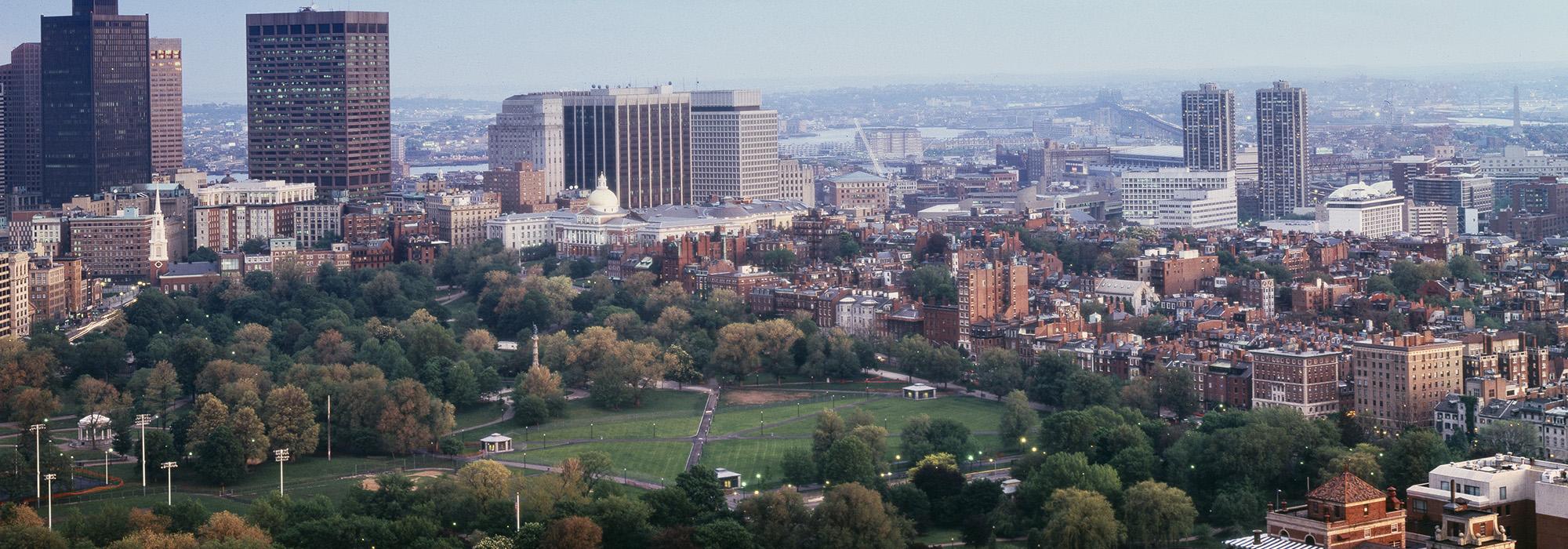New Online Cultural Landscapes Guide to Boston Launches – Helps Mark 100th Anniversary of the National Park Service
Media Contact: Nord Wennerstrom | T: 202.483.0553 | M: 202.225.7076 | E: nord@tclf.org
Boston is subject of third of five new online What’s Out There Cultural Landscapes Guides – project is a partnership of the National Park Service and The Cultural Landscape Foundation
Washington, DC (May 16, 2017) – The National Park Service (NPS) and The Cultural Landscape Foundation (TCLF) today announced the launch of a new online What's Out There Cultural Landscapes Guide to Boston. This is the third of five new online What’s Out There Cultural Landscapes Guides being created in honor of the NPS’ 100th anniversary (the What’s Out There Cultural Landscapes Guide to Philadelphia was launched in March 2016, and the What’s Out There Cultural Landscapes Guide to New York City was launched in October 2016). The online guide features more than 60 well-illustrated sites.
TCLF and the NPS Northeast Regional Office have partnered to identify, research, and document a varied collection of landscapes in five northeastern cities: Baltimore, MD, Boston, MA, New York, NY, Philadelphia, PA, and Richmond, VA. Each of the Guides will feature at least 50 sites, and are customized to provide an accessible digital inventory of selected parks and landscapes, which are searchable by geographic location, type, style, designer, and theme. Through TCLF’s digital and mobile platforms, the Guides will connect new audiences to the nation’s landscape heritage, a goal shared by TCLF and the NPS. Support comes from ABC Worldwide Stone, Bartlett Tree Experts, Sasaki Associates, Inc. and Victor Stanley.
The Guides are an outgrowth of TCLF’s What’s Out There database of North America’s designed landscape legacy. The profusely illustrated and carefully vetted What’s Out There database features more than 2,000 sites in the U.S. and Canada, 1,000 designer profiles and 11,000 images. The database is fully optimized for iPhones and similar handheld devices and includes What’s Nearby, a GPS-enabled function that locates all sites in the database with a 25-mile radius of the user’s location.
The Cultural Landscapes Guides project will significantly expand the interactive, graphically rich, user-friendly database highlighting the diversity, interconnectedness, and significance of national parks and historic sites in urban areas. Advised by NPS and TCLF staff, interns are conducting field work and research in order to develop original documentary essays about the history, design, and current condition of selected sites. The essays, accompanied by contemporary photographs that illustrate the design character of the landscapes, are being added to the What’s Out There database. The Guides will link to the database, and will also include overarching thematic narratives about the history of the NPS in each of the selected cities. Historic photographs and maps, discussions of the various themes highlighted by the research, and a GPS-enabled mobile interface will make this material relevant and accessible to a variety of users. Additionally, as a digital medium, the Guides will be flexible in content and can be expanded as new landscapes are discovered and added to the database. The Richmond Guides will follow in Fall 2017, and the Baltimore Guide in 2018.
The NPS was founded with the passage of the Organic Act of 1916. For NPS’ centennial in 2016, several new initiatives are planned to expand the agency’s focus, and provide opportunities for new and broader partnerships. One such initiative, the Urban Agenda, seeks to engage a diverse, 21st-century American public, and is guided by three principles: Be relevant to all Americans; bring the NPS parks, programs, and partnerships into alignment; and collaborate internally and externally to serve communities. Recognizing that one-third of all NPS sites are located in metropolitan areas, the initiative has placed Urban Fellows in ten cities across the country, working to increase the visibility of national parks and to foster local collaborations.
The project will touch on a diverse range of themes including nature conservation, historic preservation, civil rights, transportation, industry, municipal amenities, and urban planning relating to neighborhood parks, public housing, and redevelopment. The project will also reveal trends and make connections among designers, types, styles, and initiatives, extending from the origin of the NPS to the present day. Each of the landscapes in the Guide is either a national park unit or connects to the NPS through one of its partnership programs, including National Historic Landmarks, National Natural Landmarks, National Heritage Areas, Land and Water Conservation Fund Sites, National Parks, and National Register of Historic Places landscapes. This collaboration between the NPS and TCLF will help increase the awareness of national parks and affiliated sites in metropolitan areas.
# # #



